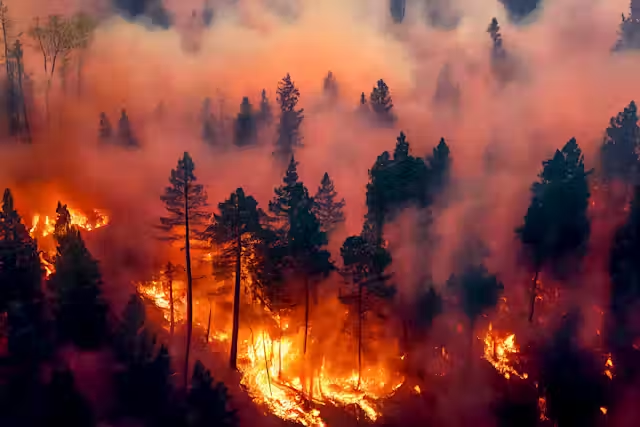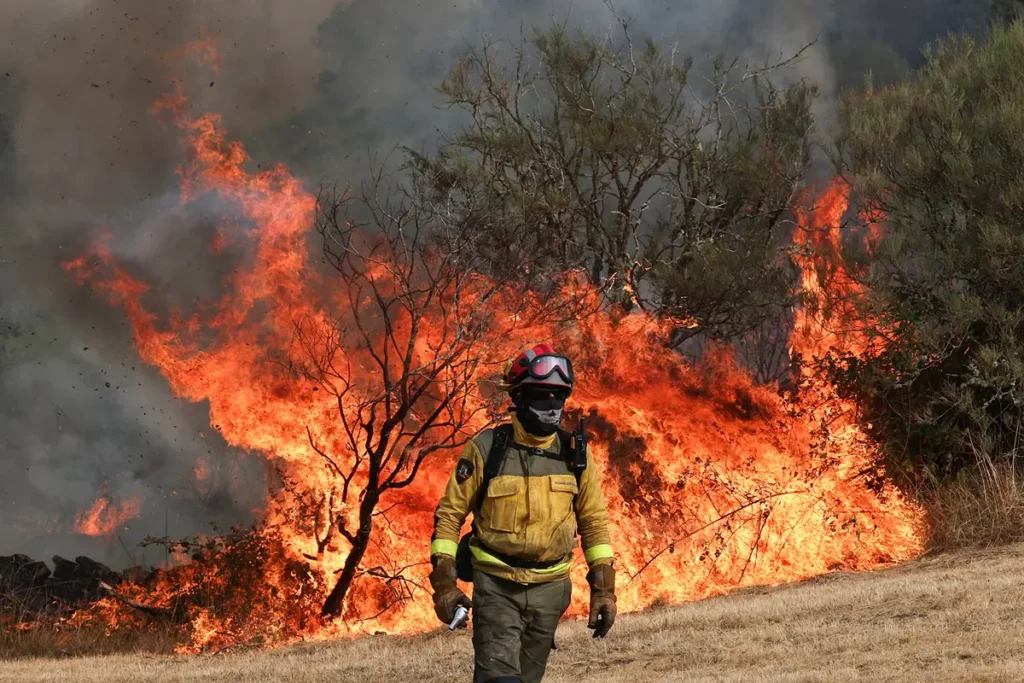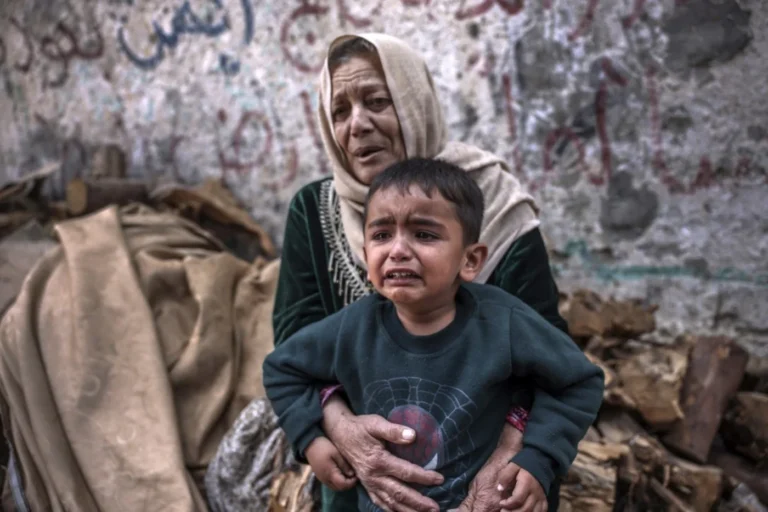
Europe is burning. A historic heatwave fuels wildfires across the continent, scorching sun-baked coastlines and tinder-dry forests while leaving a trail of devastation.
Wildfires – The Heatwave
A severe and widespread heatwave is hitting Europe, as multiple countries report record-breaking temperatures and dry conditions with strong winds increase the risk of wildfires.
Particularly in Southern and Western Europe, like Spain, Portugal, Italy, and Greece experiencing temperatures exceeding 40°C (104°F).
France – Affected Areas in Wildfires
The most severely impacted region is the Aude department in southern France, which has experienced the largest wildfire in the country this year. Other regions facing wildfire risks due to the heatwave include areas along the Mediterranean coast and parts of the northwest. Authorities deployed over 1,800 firefighters and 500 vehicles to battle the massive Aude blaze.
Spain and Portugal – Ongoing Struggles
Spain reported 14 active major fires on Friday, according to Virginia Barcones, head of the country’s emergency services. Spain’s national weather agency AEMET warned of extreme fire risk in the north and west. The north coast is expected to reach temperatures of 40 degrees Celsius (104°F).
Southern winds exacerbate the situation, causing fires to spread rapidly and become harder to control. Authorities note more aggressive fire behavior since 2017, posing a continuing challenge for suppression efforts. Mountainous terrain in some areas, like Trancoso, further hinders containment efforts.
As of August 15, 2025, the wildfires are scorching Spain and Portugal, fueled by a record-breaking heatwave. In Spain, the Las Medulas Wildfire is burning in the northwestern Leon province, near the UNESCO World Heritage Site of Las Medulas, a Roman gold-mining area . The Tres Cantos Wildfire, north of Madrid, has ravaged over 1,000 hectares near the capital.
Portugal’s Trancoso Wildfire is active in the Guarda district, 350 km northeast of Lisbon, near the Douro River. In Spain, around 800 people were evacuated from Congosta and surrounding villages near Las Medulas, with 700 remaining displaced as of August 15, and 180 residents were evacuated in Tres Cantos. In Portugal, evacuations were ordered for Palhais, Reboleiro, and other villages near Trancoso, according to IQAir.

Impact on Communities and the Environment
Wildfires in Spain and Portugal have significant and wide-ranging impacts, including loss of life and injuries, destruction of homes and livelihoods, damage to forests, agricultural land, and ecosystems, as well as severe air quality concerns and health risks due to smoke pollution.
Flames have destroyed homes, shattered livelihoods, and consumed vast swathes of forests and agricultural land.
The resulting air pollution poses a significant health risk to residents, while the long-term ecological consequences are likely to be severe.”
Prevention and Future Preparedness
The current crisis highlights the urgent need for enhanced fire prevention and preparedness measures across Europe. This means investing in firefighting resources and adopting better forest management to reduce fuel loads.
It also requires strong early warning systems and greater public awareness of fire safety. Europe must choose between climate inaction, which fuels worsening wildfires, or bold policies that drive sustainability. Embracing the latter can safeguard communities for generations.
However, the most critical step is to address the root cause of the problem by taking decisive action on climate change.
These fires could be a turning point for Europe. The time for half-measures is over.
For more such informative articles stay tuned at The World Times.



